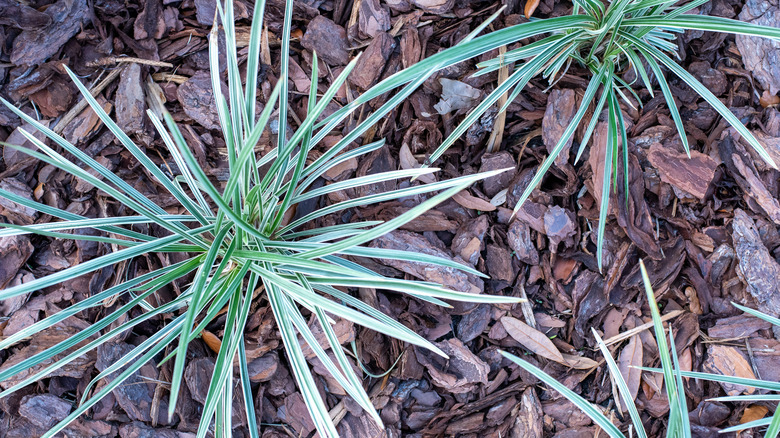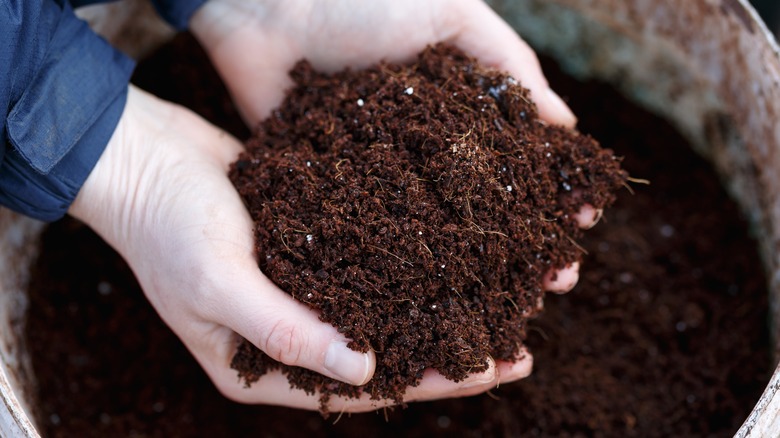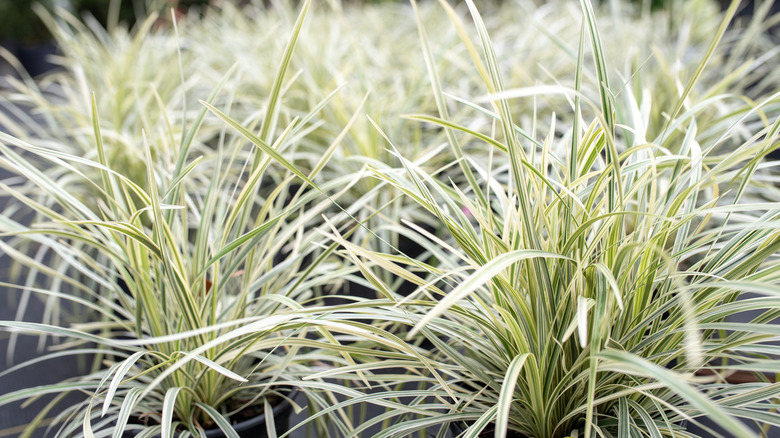How To Bring Life Back To Your Aztec Grass After A Winter Freeze
Wintertime is the season of dormancy where some living things call it quits until the ground melts in the spring. Some animals hibernate until then while deciduous trees lose their leaves. The plants that do stick around such as grass can easily get damaged by the frost when the water inside them — and in the ground — freezes up. While this isn't always a death sentence, it can be annoying when springtime rolls around and your favorite grass has lost all its luster and spark. If you have Aztec grass (Ophiopogon intermedius) in your garden and it's looking depressed after a difficult winter, all you need to do to bring it back to life is cut off the frostbitten ends.
Aztec grass is a perennial plant which means it grows anew every blooming season. Though it might get frostbitten during a mild winter, it'll still shoot back up come spring. The parts of it that were damaged by the winter freeze won't miraculously turn green and go back to normal again. Those parts are dead and will leave you with unappealing brown spots in your landscaping. The trick is to clip those frozen ends right after winter before the new growth of the plant kicks in.
Mulching on frozen ground will help winterize the Aztec grass
Cutting your Aztec grass is very simple and all you have to do to remove the dying brown ends is mow it down or use garden shears. You also don't want to waste any fertilizer on the plant until it's been cut. There's no point encouraging it to grow when the top part isn't going to make any progress and the plant is technically dormant.
Although your Aztec grass is a gorgeous perennial, very harsh winters can turn it into an annual plant that only blooms for one season. The best way to make sure that you give your plant a fighting chance at surviving and thriving after winter is by winterizing it. Prepare the ground around the Aztec grass by applying leaf, straw, and compost gardening mulch to it once the ground is sufficiently frozen. This is important because mulch acts as an insulator, providing warmth to the ground. You don't want to add it before the ground freezes because the plant would stay active during winter. Mulch contains a lot of moisture and organic material so once the weather starts getting warm, remove it so that fungal diseases don't develop.
Bring the party indoors if you don't trust the weather
Mulching your Aztec grass during winter works great if you live in a mildly cold region. However, if you live somewhere likely to be hit by blizzards, you should bring the plant indoors in a container for the winter. This will help guarantee that your perennial plant survives to see spring.
Your Aztec grass should flourish indoors where it would only need four to six hours of sunlight every day. Since this plant prefers shady areas to full, direct sunlight, you have plenty of options on where to position it. Since this plant is relatively drought-tolerant, it doesn't need a lot of water. You can give it something to drink whenever the soil feels dry to the touch. The good news when it comes to transplanting Aztec grass is that you don't have to worry about pests following it indoors. In addition to being drought-tolerant, the plant is also pest-resistant.


